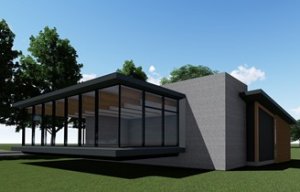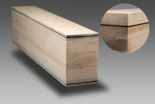
World first for AFRW in Tokyo
Teijin has developed AFRW based on its expertise in fibre reinforced composites, including aramid fibres by Teijin and carbon fibre by Toho Tenax.

4th February 2015
Innovation in Textiles
|
Tokyo
Teijin has developed AFRW based on its expertise in fibre reinforced composites, including aramid fibres by Teijin and carbon fibre by Toho Tenax, which is the core company of the group’s carbon fibres and composites business.
High-performance composite materials that offer new value are one of the strategic product fields in Teijin’s Transformation and Growth Strategies medium-term business plan that the company announced in November 2014.
Carbon fibre reinforced wood (CFRW), laminated timber that includes layers of highly stiff, thin-walled carbon fibre, achieves twice the flexural stiffness of conventional laminated timber, according to Teijin.
It is said to offer enhanced durability and design qualities for use as structural beams. The targeted development of AFRW, a more advanced material, is expected to extend applications to medium-rise buildings.
Teijin will continue developing AFRW technology by incorporating high-toughness aramid fibres and highly stiff carbon fibre, and hybrid materials incorporating these fibres, aiming to meet growing demands for large-space buildings and medium- to low-rise buildings made with wood.
Development of AFRW as an innovative, high-performance material with potential for manufacture in emerging markets is recognized as an official project under the Next Generation Material Cluster in Shikoku Region, an initiative of the Shikoku Bureau of Economy, Trade & Industry.
Teijin, collaborating with Kochi University as one of the partners specialized in wood materials, looks forward to contributing to the Shikoku, Japan region’s industrial development and forestry revitalization.
Recent seismic disasters in Japan have raised the demand for the construction of safer architectural structures. Lightweight, highly earthquake-proof wooden structures are one possible solution. Wood is also valued as a structural material offering heat resistance, design possibilities and soothing natural appearances. In addition, Japan is working actively to revive its forestry industry. The new Legislation on Promotion of Use of Wood in Public Buildings, which was enacted in 2007, calls for the increased use of wood in low-rise public buildings, such as gymnasiums and public-service and local government buildings.

Business intelligence for the fibre, textiles and apparel industries: technologies, innovations, markets, investments, trade policy, sourcing, strategy...
Find out more